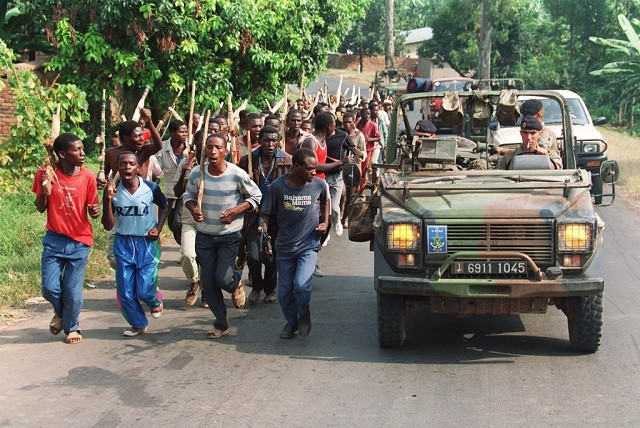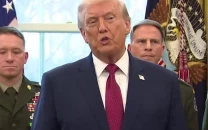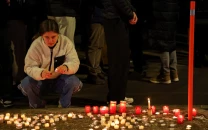Key dates in Rwanda's genocide and its aftermath
Over 100 days in Rwanda in 1994, about 800,000 people, mainly Tutsis, were slaughtered

PHOTO: AFP
Here is a timeline:
President Killed
On April 6, 1994, Rwanda's president Juvenal Habyarimana, from the Hutu majority, is killed when his aircraft is shot down over Kigali.
He was on his way back from peace talks in Tanzania with Tutsi rebels of the Rwandan Patriotic Front (RPF), who had been waging an insurgency since 1990.
Genocide starts
The very next day, soldiers kill the moderate Hutu prime minister, as well as 10 Belgian paratroopers guarding her and other top officials in the Hutu-dominated coalition government.
The genocide begins. Lists of those to be killed -- mostly Tutsis but also opposition Hutus -- are distributed.
Soldiers and Hutu militiamen set up roadblocks and launched a house-to-house search for their targets.
The Mille Collines radio station spouts anti-Tutsi propaganda, referring to them as "cockroaches". Officials and media outlets incite people to kill, loot and rape.
Men, women and children are killed with machetes, grenades and bullets.
UN scales down effort
On April 9, French and Belgian paratroopers start arriving to evacuate their nationals.
By April 18, the Red Cross says tens of thousands of people, perhaps hundreds of thousands, have died.
A UN peacekeeping operation, unable to stop the massacres, is reduced on April 21 from about 2,500 to 270 men.
A week later, Doctors Without Borders (MSF) says a "genocide" is underway.
On June 22, France deploys Operation Turquoise, a UN-mandated force tasked with halting the killing. It has little effect.
On June 30, the UN Human Rights Commission's special rapporteur says the slaughter legally qualifies as "genocide" and appears to have been planned.
Slaughter stops
On July 4, soldiers of the mainly Tutsi RPF seize the capital Kigali. The 100 days of killings end.
Hundreds of thousands of Hutus, fearing reprisals, fled to neighbouring Zaire, today's Democratic Republic of Congo.
International court
In November 1994, the UN creates the International Criminal Tribunal for Rwanda to try the main perpetrators in neighbouring Tanzania.
In May 1998, Jean Kambanda, who was prime minister during the killings, pleads guilty to genocide and crimes against humanity. He is the first to admit responsibility.
In September 1998, the court becomes the first international tribunal to hand down a conviction for genocide, finding a former town mayor guilty of inciting the massacre of more than 2,000 Tutsis.
The court goes on to sentence several dozen people, including some to life in jail. It closes in 2015.
Local courts
From March 2005, community-run courts called "gacaca" begin trials for people suspected of participating in the genocide.
Nearly two million people are brought before 12,000 courts, with 65 per cent convicted. The courts close in 2012.
Trials are also held in Belgium and France.
Rwanda president
RPF leader Paul Kagame is chosen to be president in April 2000, following the resignation of Pasteur Bizimungu, a Hutu who had served in the post since July 1994.
Kagame remains in power today.
In November 2006, a French judge recommends his prosecution by the UN-backed tribunal for suspected participation in the 1994 killing of President Habyarimana. Rwanda breaks off diplomatic relations with France.
In January 2012, a French experts' report concludes the missile that downed Habyarimana's plane was fired from a base held by the Rwandan Armed Forces (FAR).
In December 2018, French judges drop their long-running investigation into Habyarimana's killing, which had implicated seven people close to Kagame.



















COMMENTS
Comments are moderated and generally will be posted if they are on-topic and not abusive.
For more information, please see our Comments FAQ